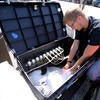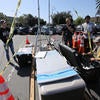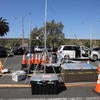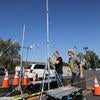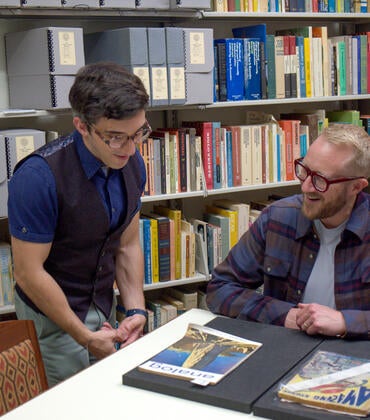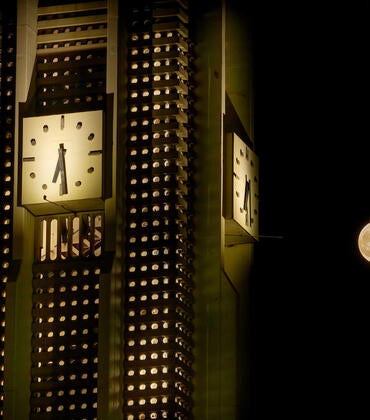You’ve probably noticed the antenna-like towers and black tote cases that have appeared around the UC Riverside campus in recent weeks. Not surprisingly, they’ve prompted some questions.
“Some people are curious,” said Ranga Rajan Thiruvenkatachari, a graduate student in mechanical engineering, who is part of the research team that set up the equipment. “Sometimes I see people stopping to see what’s happening.”
It’s a question they get all the time, said Aaron Caddell, a senior mechanical engineering major, who is also part of the research team.
The equipment went up in mid-July and will remain in place for a few more weeks as part of a traffic and air pollution study along the 215 freeway.
Mechanical engineering Professor Akula Venkatram and his research team of two graduate students and 19 undergraduates received a $550,000 research award from the California Department of Transportation, or Caltrans, earlier this year for the study.
The researchers, using wind sensors and air samplers, are measuring how roadside barriers such as sound walls might reduce the impact from pollutants discharged by cars and trucks traveling on the freeway. UCR’s proximity to the 215 freeway made it an ideal candidate for the study.
“It’s very serendipitous that we have a freeway running through campus,” said David Pankratz, a research and development engineer, who manages the field studies.
The study will collect data to examine whether atmospheric dispersion models — the mathematical simulation for how pollutants spread — developed by the U.S. Environmental Protection Agency can predict the impact of highway related emissions on near-road air quality under real-world conditions.
“This data set is very important because it will be used by agencies throughout the world to evaluate models used in studying the environmental impact of highway projects,” Venkatram said.
The research group worked with Facilities Services in determining where and when to place the equipment.
The tote cases are the most visible part of the study, with 45 dispersed at various points around the campus. Each box collects air samples using a thick-walled polyethylene sample bag, pumps, and a single-board computer. The samples are analyzed in a laboratory at the Center for Environmental Research and Technology, or CE-CERT, at UCR’s Bourns College of Engineering
Metal tripod-mounted towers were placed in four campus parking lots. The most prominent ones include a 20-footl tower in Lot 30 and another in Lot 1 that can be raised to a height between 12-16 feet. Both are in parking spaces and cordoned off with orange cones and yellow caution tape. Three smaller ones, each standing about 6-feet tall — are also in the dirt side areas of Lots 1, 5, and 6.
Attached to the towers are sonic anemometer wind sensors that measure wind speed and direction, as well as temperature.
The team placed aethalometers in three locations to measure fine particulate matter from diesel exhaust. Lastly, video cameras were installed to determine the number of cars and trucks passing through campus.
As part of the study, the research team outfitted eight vehicles with systems that release low quantities of sulfur hexafluoride. That allows the team to isolate samples from only the section of the 215 that is being studied, Pankratz said.
The student researchers drive up and down the corridor for three hours during each study period and then take the samples from the tote cases collected per study day to the CE-CERT lab for analysis.
This summer’s work, gathering information from a freeway with a sound wall on only one side, is only the first step in a two-year study.
Additional field work is planned for next summer in Orange County in a location with sound walls on both sides, and in another location to be determined with no sound walls, Pankratz said.
A report on the study, as well as its findings, is expected to be released by December 2020.
